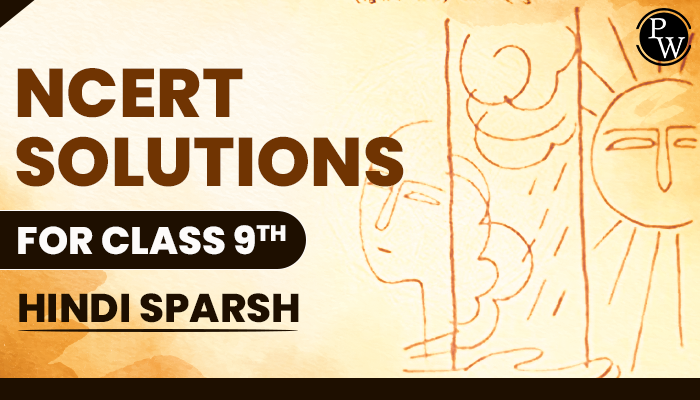
A Permutation Formula involves arranging objects in a specific order or sequence. It pertains to the arrangement of members or elements of a set in a linear or sequential fashion. For instance, consider the set A={1,6}, which results in 2 permutations: {1,6} and {6,1}. Here, the elements are arranged in a defined order, leaving no other possible arrangements for the elements within set A.
In contrast, a combination deals with arrangements where the order of elements is insignificant. For further understanding, refer to Permutation And Combination.
When examining transportation schedules like trains, buses, or flights, we often marvel at how they're organized for the convenience of the public. Permutation plays a pivotal role in planning these schedules, and determining the departure and arrival times. Similarly, when encountering vehicle license plates comprised of alphabets and digits, permutations enable the creation of these codes with ease.
Definition of Permutation
A permutation is a mathematical concept that refers to the arrangement of a set of objects in a specific order or sequence. In a permutation, each element or member of the set is arranged in a distinct and well-defined position. The number of possible permutations of a set depends on the number of elements in the set and the order in which they are arranged. Permutations are used in various fields of mathematics, statistics, and combinatorics to solve problems related to arranging, selecting, or ordering objects or elements from a given set.
Representation of Permutation
Formula: Permutations are often represented using a mathematical formula. The formula for the permutation of "n" objects taken "r" at a time is denoted as P(n, r) and calculated as P(n, r) = n! / (n - r)! For example, to find the number of ways to arrange 3rd and 4th positions for 10 members, you would use the formula P(10, 2) = 10! / (10 - 2)! = 90.
Notation: Permutations can also be represented using notation. For example, a permutation of 3 elements taken 2 at a time can be notated as "P(3, 2)".
Visual Representation: Permutations can be visually represented through diagrams, tables, or charts, especially when dealing with smaller sets of objects.
These representations help in understanding and calculating permutations for various combinatorial problems.
Formula For Permutation
The formula for calculating the permutation of "n" objects for selecting "r" objects is expressed as P(n, r) = n! / (n-r)!. For instance, to determine the number of ways to assign the 3rd and 4th positions to 10 members from a group, you can use the permutation formula:
P(10, 2) = 10! / (10-2)! = 10! / 8! = (10 x 9 x 8!) / 8! = 10 x 9 = 90.
This formula allows us to calculate permutations efficiently. If you'd like to learn more about the factorial calculation method, you can click here.
Also Check – Logarithm Formula
Types of Permutation
Permutations can be categorized into three distinct types:
Permutation of n Different Objects (Without Repetition):
This type of permutation involves arranging a set of n distinct objects in a specific order, where each object appears only once in the arrangement, and repetitions are not allowed.
Permutation with Repetition:
In this type of permutation, repetitions are allowed. It means you can arrange a set of objects where some or all of the objects can appear more than once in the arrangement.
Permutation When Objects Are Not Distinct (Permutation of Multisets):
This category of permutation deals with arrangements where objects are not necessarily distinct. In other words, some or all of the objects may be identical, and you need to find the number of different permutations considering these identical objects.
These three categories encompass various scenarios and are important concepts in combinatorics and mathematics for solving a wide range of problems involving arrangement and order.
Permutation of n Different Objects
When dealing with positive integer n and a whole number r where r is less than n, the notation P(n, r) is employed to denote the total count of possible arrangements or permutations of n distinct objects when selecting r at a time. In permutations without repetition, the available choices progressively decrease with each selection. This concept can also be represented as nPr.
Mathematically, P(n, r) can be expressed as:
P(n, r) = n(n-1)(n-2)(n-3)...... (up to r factors)
Or alternatively,
P(n, r) = n(n-1)(n-2)(n-3)......(n – r +1)
In essence, this formula represents the number of ways to arrange n distinct objects when choosing r of them, accounting for the order in which they are arranged.
Permutation with Repetition
The computation of permutations with repetition is straightforward and can be expressed using exponent notation. When dealing with a total of "n" objects and selecting "r" of them, considering that repetition is allowed, the calculation is as follows:
For each choice, there are "n" different ways to select an object.
Therefore, the permutation of objects when repetition is allowed can be represented as:
n × n × n × …… (repeated "r" times) = n r
This formula serves as the permutation equation for determining the number of possible permutations when selecting "r" items from a set of "n" objects, taking into account that repetition is permitted.
Permutation of Multisets
The formula for calculating permutations of multisets can be expressed as follows:
For a multiset containing "n" objects where there are P1 objects of the first kind, P2 objects of the second kind, P3 objects of the third kind, and so on, up to Pk objects of the kth kind, with all other objects being distinct, the number of permutations (P) is given by:
P = n! / (P1! * P2! * P3! * ... * Pk!)
In this formula, "n" represents the total number of objects in the multiset, and P1, P2, P3, ..., Pk represent the counts of objects of each kind. "!" denotes the factorial of a number, which is the product of all positive integers from 1 to that number.
Fundamental Counting Principle
The Fundamental Counting Principle, often used in conjunction with permutations, provides a way to calculate the total number of outcomes when making multiple sequential choices or arranging items. It's particularly useful when each choice affects the subsequent ones. Here's how it relates to permutations:
First Choice: Suppose you have 'n' options for the first choice. This could represent selecting the first item in a permutation.
Second Choice: After making the first choice, you have 'm' options for the second choice. This is akin to selecting the second item in a permutation.
Subsequent Choices: This pattern continues for each choice or position in the permutation.
The Fundamental Counting Principle for permutations can be summarized as:
"If there are 'n' ways to make the first choice and 'm' ways to make the second choice, then there are 'n x m' ways to make both choices sequentially."
In general, for a permutation with 'r' positions, if you have 'n1' choices for the first position, 'n2' choices for the second position, 'n3' choices for the third position, and so on, the total number of permutations is:
Total Permutations = n1 x n2 x n3 x ... x nr
This principle is essential for solving problems that involve arranging elements in specific orders, where the choices made for each position are not independent.
Also Check – Introduction to Graph Formula
Difference Between Permutation and Combination
Definition:
Permutation: Permutation refers to the arrangement of objects in a specific order. It involves selecting and arranging items from a set in a particular sequence.
Combination: Combination, on the other hand, involves selecting items from a set without regard to their order. It focuses on choosing items without arranging them in a specific sequence.
Order Matters:
Permutation: Order matters in permutation. Changing the order of selected items results in a different permutation. For example, arranging letters of the word "ABC" in different orders like ABC, BCA, CAB, etc., are distinct permutations.
Combination: Order does not matter in combination. Selecting the same items in a different order does not change the combination. For instance, choosing three people from a group to form a committee results in the same combination, regardless of the order in which they were chosen.
Formula:
Permutation: The formula for permutations is P(n, r) = n! / (n - r)! where 'n' is the total number of items, 'r' is the number of items to be selected, and '!' denotes factorial.
Combination: The formula for combinations is C(n, r) = n! / (r!(n - r)!), where 'n' is the total number of items, 'r' is the number of items to be selected, and '!' represents factorial.
Examples:
Permutation: Finding the number of ways to arrange five books on a shelf, choosing the order of runners in a race, or arranging seats for a group of people at a round table.
Combination: Determining the number of ways to select a group of three students to form a study group, choosing a committee from a pool of candidates, or picking ingredients for a recipe.
Distinctness:
Permutation: Permutations are distinct arrangements, so changing the order changes the permutation.
Combination: Combinations are not distinct arrangements, and the same combination can be achieved in multiple ways by selecting the same items.
In summary, the fundamental difference between permutation and combination lies in whether order matters. Permutation focuses on arranging items in a specific sequence, while combination deals with selecting items without regard to their order. Both concepts are essential in solving various combinatorial problems.
Also Check – Ratio and Proportion Formula
Solved Examples
Example 1:
(i) How many ways can we arrange 6 children in a line if two particular children must always be together?
Solution: We can treat the two particular children as a single unit, so we have 5 units in total to arrange, which can be done in 5! ways. Additionally, the two children within the unit can be arranged in 2! ways. Therefore, there are a total of 5! * 2! = 240 ways to arrange them.
(ii) What is the number of arrangements when the two particular children are never together?
Solution: There are initially 6! ways to arrange the 6 children. From this, we subtract the 240 ways in which the two particular children are together. So, there are 6! - 240 = 480 ways in which the two children are never together.
Example 2:
Consider a set with 5 elements: a, b, c, d, e. How many ways can 3 elements be selected from this set without repetition?
Solution: Given the set X = {a, b, c, d, e}, and we need to select 3 elements without repetition. This can be calculated using combinations, denoted as C(5, 3).
Example 3:
You need to seat 5 men and 4 women in a row in such a way that the women occupy the even-numbered places. How many such arrangements are possible?
Solution: In this scenario, there are 9 positions in total. The even positions are the 2nd, 4th, 6th, and 8th places, which can be occupied by the 4 women in P(4, 4) ways (permutations of 4 distinct women). Similarly, the remaining 5 positions can be occupied by the 5 men in P(5, 5) ways. Using the Fundamental Counting Principle, the total number of seating arrangements is 24 * 120 = 2880 ways.
Permutation Formula FAQs
What does the term "permutation" refer to?
Could you provide the formula for permutation?
How are permutations categorized? Permutations are categorized based on three conditions, which are:
What is the formula for permutation when repetition is allowed?
Could you explain the permutation formula for multisets?










